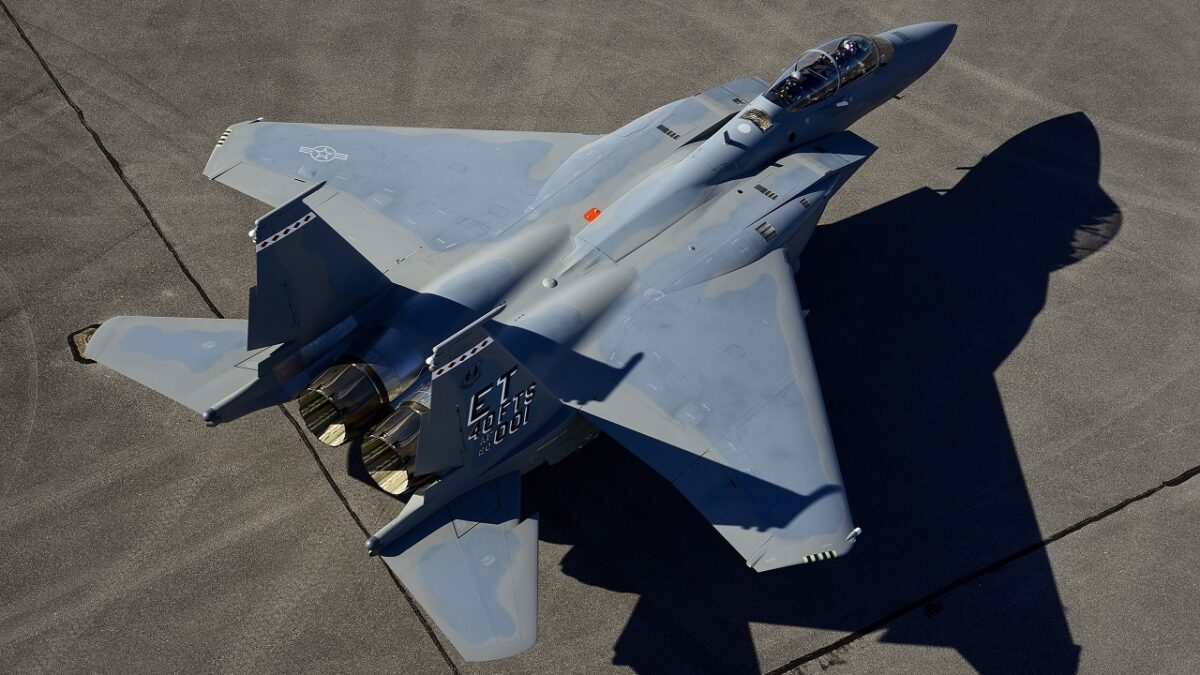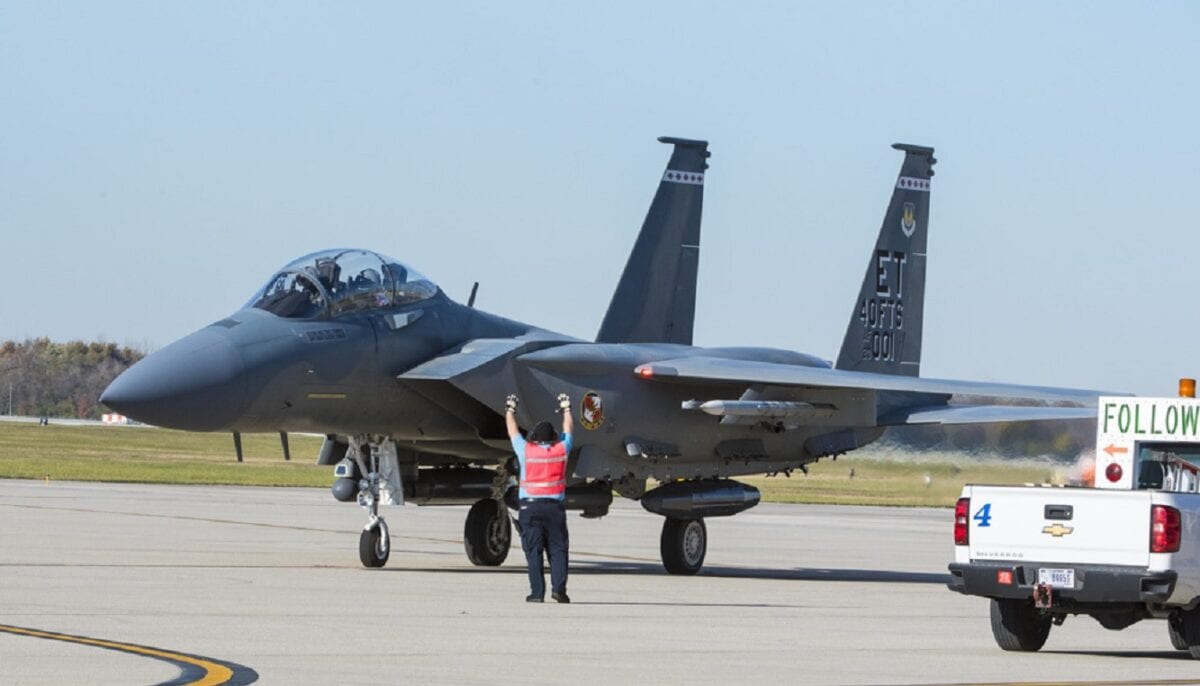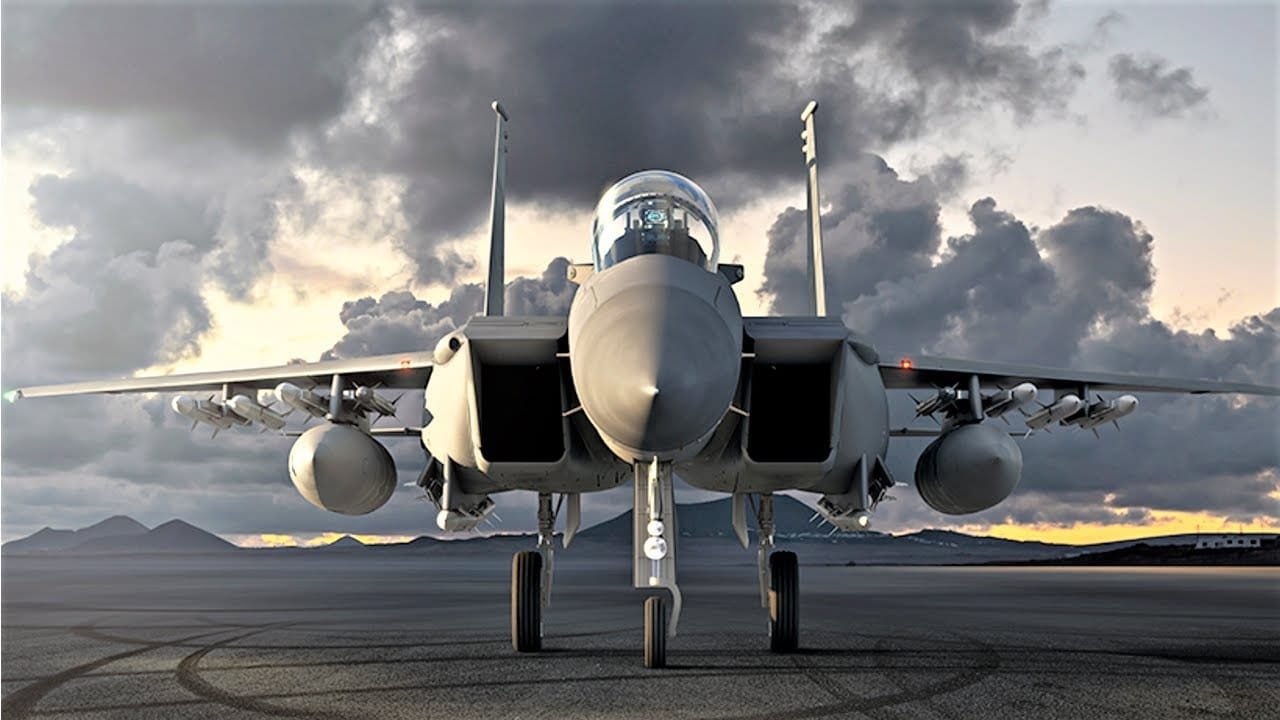Will the U.S. Air Force Receive Fewer F-15EX Than Planned? – The United States Air Force has reversed course on the number of Boeing F-15EX Eagle II aircraft that it proposed to buy to replace its aging F-15 Eagle aircraft that first entered service in the 1980s. The service had sought to add twenty-four of the fighters to the fleet in 2023, twice the number that it had originally asked for in 2022. The Air Force had also sought to accelerate the purchase of the F-15EX over the next few years, as the older C and D models were retired.
Now it seems that the plans may have changed. Aviation Week reported on Tuesday that the Air Force is now seeking to reduce its acquisition of the fourth-generation plus-plus fighter jets by just sixty-four aircraft. The service will still acquire eighty F-15EXs, and those aircraft will be manufactured at the original production lines in St. Louis. However, the Air Force may also halt procurement of the twin-engine fighter after the fiscal year 2024 (FY24), resulting in a forty-four percent reduction from the originally planned acquisition.
In 2020, the United States Air Force determined that the upgraded fourth-generation F-15EX would be a reliable – and more importantly affordable – fighter to complement its fifth-generation fleet of Lockheed Martin F-35 Lightning IIs.
Meet the F-15EX
The F-15EX is a two-seat all-weather, multi-role fighter that offers enhanced capabilities that are completely unique to the U.S. Air Force. It includes fly-by-wire flight controls, new weapons stations, a new electronic warfare suite, advanced radar and computer, conformal fuel tanks, and a strengthened airframe.
The improved F-15EX also features a deep magazine that will allow it to carry a load of advanced weapons – yet with a twenty-eight percent larger payload than the F-15E. It can also carry more weapons than the F-35, making it well-suited to homeland defense and some defensive counter-air missions overseas.
At the same time, the fighter will also require only minimal transitional training and little additional manpower from the older versions of the F-15. According to the Air Force, it has also required little to no infrastructure changes. The service had estimated that the F-15EX fighter shares about seventy percent of parts with the current F-15Cs and F-15Es that it will be replacing. In addition, the original production lines are still in place, while the aircraft’s training facilities, maintenance depots, and other infrastructure can also be readily shifted to F-15EX support.
Developed for Non-Stealth Missions
The F-15EX Eagle II has been described as an “unintended aircraft” that was developed out of necessity. It came about due in no small part to the mounting costs of the Lockheed Martin F-35 Joint Strike Fighter program, and as a result, the Air Force decided it needed a “filler” fighter jet that could support the fifth-generation stealth aircraft, yet also be able to conduct missions that wouldn’t require the sophistication and advanced capabilities of the F-35.
In other words, the F-35 is well-suited to many roles, but it could be argued that it is simply too expensive to be used in missions that absolutely don’t require its cutting-edge capabilities, namely the combination of stealth and sensor fusion. This is where the F-15EX would fill the void – it would still be a highly capable combat aircraft, but not one used against other fifth-generation fighters.

The F-15EX, the Air Force’s newest fighter aircraft, arrives to Eglin Air Force Base, Florida March 11. The aircraft will be the first Air Force aircraft to be tested and fielded from beginning to end through combined developmental and operational tests. The 40th Flight Test Squadron and the 85th Test and Evaluation Squadron personnel are responsible for testing the aircraft. (U.S. Air Force photo/1st Lt. Karissa Rodriguez)

An F-15EX fighter jet taxis to its parking spot at Wright-Patterson Air Force Base, Ohio, Nov. 8, 2021. The jet visited Wright-Patt to give the Air Force Life Cycle Management Center’s F-15EX program office the opportunity to see the aircraft up close. (U.S. Air Force photo by Jaima Fogg)
Currently, near-peer adversaries lack significant numbers of the most advanced fighters. China has only a few hundred J-20 Mighty Dragons, while Russia has very few Su-57s. The F-15EX Eagle II wouldn’t need to be used against those, as that is where the F-22 Raptor and F-35 could come into play instead. The F-15EX would be used in those cases where the Air Force doesn’t want to unnecessarily risk its more expensive and capable aircraft.
Now a Senior Editor for 1945, Peter Suciu is a Michigan-based writer who has contributed to more than four dozen magazines, newspapers and websites. He regularly writes about military hardware, and is the author of several books on military headgear including A Gallery of Military Headdress, which is available on Amazon.com. Peter is also a Contributing Writer for Forbes.

